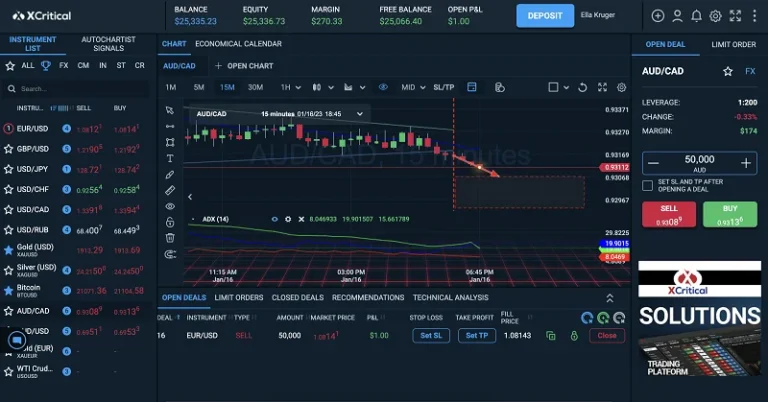Content
Moreover, transactions can be authorized by attaining a required threshold of shares instead of requiring all or none of the shares. This eliminates a single point of failure and enhances the security and multi-party computation wallet availability of the wallet. So, you now understand what is MPC wallet, do you know it represents the future of secure cryptocurrency management? By leveraging the principles of multiparty computation, they eliminate single points of failure and provide unparalleled security. Whether you’re an individual seeking a secure storage solution or an enterprise managing vast digital assets, MPC wallets offer a reliable and innovative approach to safeguarding funds.
What Is Multi-Party Computation?
However, the distributed nature of private keys in MPC wallets makes it significantly more challenging for attackers to gain unauthorized access. An MPC Wallet is a type of smart contract wallet that leverages Multi-Party Computation to securely manage digital assets on the Ethereum blockchain. Multisig (short for Multi-Signature) wallets, on the other hand, require multiple signatures from different parties to authorize transactions. A multisig wallet is typically set up with an https://www.xcritical.com/ “M-of-N” scheme, where M signatures out of N total participants are required to approve a transaction.

DeFi Applications and Protocols
While no wallet is completely immune to hacking, MPC wallets provide enhanced security compared to single-signature wallets due to the distributed nature of private keys. The non-custodial wallets are often seen as safer storage options as users don’t need to trust a service provider or a third party with their keys. However, being in full control over your wallets and keys also has disadvantages (especially for beginners). These wallets usually require some degree of technical knowledge, and users need Non-fungible token to make sure their keys don’t get lost or stolen.

Design Distributed Key Management
Learn more about why MPC technology is the future of digital asset security on our blog. As we’ve seen over the years, the best defense against cybercriminals is a multilayered one that can provide redundancy in the event that one of the security controls fails. That’s why today’s institutions require a security system that layers MPC alongside numerous other software and hardware defenses to make breaking in highly expensive and nearly impossible. Lindell et al. offers a slight decrease in the number of transactions that need to be signed from Gennaro and Goldfeder, at 8.
- They enable improved security and risk mitigation, more efficient asset management and transfer, advanced access control and permissions, and streamlined collaboration between different parties.
- To authorize a transaction, the system requires a predefined threshold of key shards to participate.
- Whenever the key is required, MPC is set in motion to confirm that all parties, or a predetermined number of parties out of the full set, approve of the request.
- Multi-party computation (MPC) or secure MPC (SMPC) is a way for a bunch of people to work out something secret together.
- By leveraging MPC technology and smart contracts, MPC wallets enable secure collaboration and decision-making across various use cases.
- However, they are not the same thing, as they operate based on different underlying mechanisms.
With MPC wallets, the private key is split into shares and jointly computed by the parties involved, without ever being fully reconstructed. In contrast, Multisig wallets require each participant to have their own distinct private key and specify a required number of signatures to approve transactions. In this blog post, we’ll explore everything you need to know about MPC wallets, including how they work, their benefits, and how to use or build one whether you’re a user or developer. By leveraging MPC technology, web3 wallets can provide a better user experience and make digital asset management more secure and efficient. MPC wallets are crucial to the web3 ecosystem as they offer enhanced security, flexibility, and control for the web3 wallet experience. They enable improved security and risk mitigation, more efficient asset management and transfer, advanced access control and permissions, and streamlined collaboration between different parties.
It supports various configurations, from single-user setups to complex multi-party access control. Once the transaction is signed, the wallet broadcasts it to the blockchain network for validation. Notably, the broadcast process doesn’t expose any of the underlying cryptographic details or private key information. The signed transaction contains only the data necessary for blockchain verification, ensuring privacy and security throughout the process.
While these tools were at one point the only options for digital asset storage, certain operational and security inefficiencies in each have led to the rise of new solutions, such as multi-party computation. As such, MPC technology is now applied to a range of use cases, such as securing digital assets in MPC wallets or keeping certain information private during digital auctions. In supply chain operations, blockchain is used to enhance transparency and traceability. With MPC wallet development, enterprises can securely manage tokens representing goods, payments, or services, ensuring that transactions are tamper-proof and compliant with contractual agreements. The gaming industry is increasingly adopting blockchain for in-game assets, NFTs, and reward systems. MPC wallet-as-a-service (WaaS) allows gaming companies to integrate secure wallets for managing digital collectibles and cryptocurrency rewards, enhancing player engagement and trust.
However, due to a complex regulatory environment, many of these institutions are forced to operate with secure but slow cold storage solutions. So, the compatibility of an algorithm with cold storage is another important factor to consider when evaluating MPC algorithms. These parties will independently compute their part of the private key share they hold to produce a signature without revealing the encryption to the other parties. This means there is never a time when the private key is formed in one place; instead, it exists in a fully “liquid” form.
This technology is widely used in scenarios requiring data confidentiality, such as financial transactions, healthcare data processing, and digital identity verification. Its ability to compute functions without exposing sensitive data positions MPC as a cornerstone of modern cryptography. Today, we’re using MPC-CMP – the fastest and most secure MPC algorithm currently available – adding a new degree of flexibility to the equation (including the ability to sign an MPC from a hardware storage device). Ordinarily, when a single private key is stored in one place, a wallet’s owner would need to trust that the device or party that holds that private key is completely secure.
DeFi platforms leverage MPC wallets to enhance user security while facilitating seamless transactions. These wallets provide users with secure access to DeFi protocols like lending, borrowing, or staking, ensuring their private keys remain protected even during complex on-chain interactions. The multi-party computation solution then solves the problem of secure key storage. As the key no longer resides in one single place, it also allows more personnel to access a wallet without the risk of any of them turning rogue and running off with the digital assets it contains. Users can set different thresholds for authorizing transactions depending on various factors such as amount, frequency, destination address and more. Users can modify these thresholds at any time without affecting existing transactions, and create contingency plans in case any of the required parties become unavailable.
MPC works by splitting the traditional private keys into multiple pieces, distributing them in multiple places to ensure no one person has full access to the traditional private key. The major advantage here is that the private key is always used in a distributed manner. MPC wallets offer keyless security by eliminating the need for a single private key, reducing the risk of theft. TSS divides a private key into multiple parts, requiring a threshold to sign transactions, making it harder to compromise.
One of the top applications for multi-party computation is for securing digital assets – and recently, MPC has become the standard for institutions looking to secure their assets while retaining fast and easy access to them. If you’re in the institutional digital asset space, you’ve probably heard about MPC (multi-party computation). An MPC Wallet is a type of smart contract wallet that uses Multi-Party Computation to manage digital assets on the Ethereum blockchain securely.
Multi-party computation (MPC) is a cryptographic technique that allows multiple parties to jointly compute a function without revealing their individual inputs. This technology has numerous practical applications, including the secure storage and transfer of digital assets in MPC wallets. So while both MPC and multisig wallets involve multiple parties in the transaction process, they differ in the way they handle private keys and transaction approvals.